27 Dec 2021 - {{hitsCtrl.values.hits}}
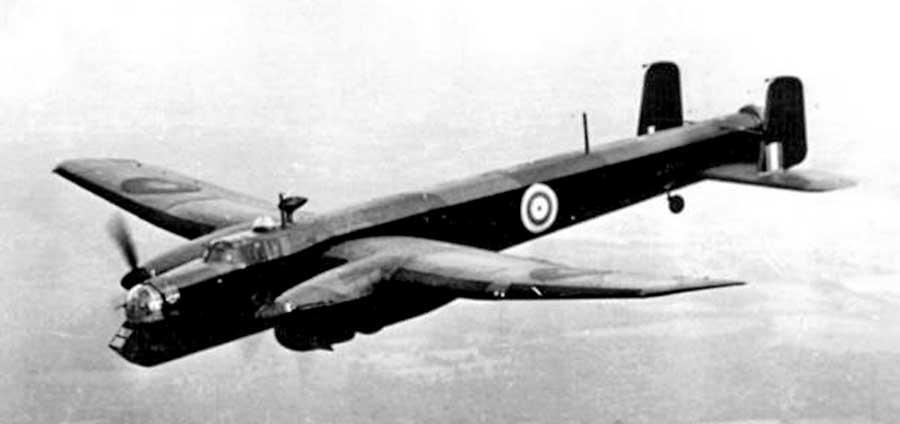
Armstrong Whitworth Whitley
Ekanayake Rohan Amerasekera was an officer in the Royal Air Force (RAF). After that, he was enlisted in the Royal Ceylon Air Force. He was eventually elevated as the third Commander of the Royal Ceylon Air Force (RCyAF) from 1962-1970. He remains to be the first Ceylonese Commander of the RCyAF. During World War II, he was enlisted as a navigator in the RAF and commissioned. He subsequently qualified himself as a pilot in the newly formed Royal Ceylon Air Force. On 31 December 2021, it would be 51 years since he retired from the Royal Ceylon Air Force, and I take this opportunity to honour and pay tribute to this veteran.
Commander of the Royal Ceylon Air Force (RCyAF) from 1962-1970. He remains to be the first Ceylonese Commander of the RCyAF. During World War II, he was enlisted as a navigator in the RAF and commissioned. He subsequently qualified himself as a pilot in the newly formed Royal Ceylon Air Force. On 31 December 2021, it would be 51 years since he retired from the Royal Ceylon Air Force, and I take this opportunity to honour and pay tribute to this veteran.
Early life and education
AVM Amerasekera hails from Kegalle and was born on 21 May 1916. He was one of the seven siblings blessed to Edward Henry Ekanayake and Joslina Amerasekera. Orphaned at the age of four, he was fostered by his uncle and aunt, Victor and Eda de Silva Siriwardena and later grew up with his eldest sister, Hyacinth and her husband, Ashley Peiris at ‘Ash Court’, Kegalle. He received his education at Wesley College, Colombo (1925–29), Kingswood College, Kandy (1929–32), St. Mary’s College, Kegalle (1933–34) and at the Pembroke Academy (1935–39). As recorded, early in his life an astrologer had predicted that one day he will be a great leader, but young Rohan could not figure out how that would come about.

Handley Page Halifax B.III
Second World War
With the outbreak of World War II, Amerasekera joined Ceylon Defence Force, but due to family pressure, he had to leave. He with his compatriots Rex de Silva and Ananda Kularatne applied to join the Royal Air Force on 19 September 1940 and, was selected to be sent to the UK with the first batch of RAF recruits for training in June 1941 on the SS Exeter.
applied to join the Royal Air Force on 19 September 1940 and, was selected to be sent to the UK with the first batch of RAF recruits for training in June 1941 on the SS Exeter.
After a long voyage on reaching the United Kingdom in September 1941, he was enlisted as an Aircraftman (2nd Class) in the Royal Air Force Volunteer Reserve. He was then promoted as a Leading Aircraftman and posted to the Empire Air Navigation School in May 1942, after which was posted to the No 1 Advanced Flying Unit in September 1942. In November 1942, he was mustered as an Air Navigator. At the same time, he was promoted as a temporary Sergeant and posted to No. 10 Operational Training Unit RAF in Abingdon, Berkshire. This unit was formed at RAF Abingdon on 8 April 1940 with No. 97 Squadron RAF (97 Sqn) and No. 166 Squadron RAF (166 Sqn) flying Armstrong Whitworth Whitley’s to train night bomber crews.
The Armstrong Whitworth Whitley was a twin-engine heavy bomber. The Whitley had a crew of five: a pilot, co-pilot/navigator, a bomb aimer, a wireless operator and a rear gunner. The pilot and second pilot/navigator sat side by side in the cockpit, with the wireless operator further back. The navigator, his seat mounted on rails and able to pivot, slid backwards and rotated to the left to use the chart table behind him after takeoff.
He was then sent to the Royal Air Forces newly introduced Heavy Conversion Unit (HCU). These HCUs began forming in late 1941, to qualify crews trained on medium bombers to operate the heavy bombers before final posting to the operational squadrons. Some of the HCUs were involved in bombing operations over Germany. At the HCU, he was converted from Armstrong Whitworth Whitleys’ to Handley Page Halifax. The Handley Page Halifax is a four-engine heavy bomber.
In June 1943, AVM Amerasekera was assigned to No 158 Squadron in Yorkshire, which was part of the RAF Bomber Command. From 1942 onward, the British bombing campaign against Germany became less restrictive and increasingly targeted industrial sites and the civilian manpower base essential for German war production.
While serving at No 158 Squadron AVM Amerasekera, was commissioned as a Pilot Officer, in the General Duties (Navigator) Branch bearing service number 155926. General Duties (Navigator) branch and Navigators by profession are mostly obsolete now due to modernized navigational suites that are fitted on aircraft. In 1943, young Amerasekera was transferred to the No. 35 Squadron of the Pathfinder Force (PFF).
"On 13 November 1962, he was promoted as a Temporary Air Commodore and was appointed the third Commander of the Royal Ceylon Air Force. He remains to be the first Ceylonese to hold this prestigious appointment. He was confirmed in the rank of Air Commodore on 1 January 1964 and promoted to Air Vice-Marshal on 1 October 1967. He retired from the RCyAF on 31 December 1970 after a successful tenure"
The Pathfinders were the target-marking squadrons in RAF Bomber Command during this time. Pathfinder Force locates and marks targets with flares, which the main bomber force could aim at, increasing the accuracy of their bombing. In today’s context, it is known as target designation, which could be done by laser. Further beam riding, also known as Line-Of-Sight Beam Riding (LOSBR) or beam guidance is a technique used now for directing munitions to its target by means of radar or a laser beam that is mostly used for accuracy.
In the interim AVM Amerasekera was promoted to the rank of Flying Officer on 29 January 1944, and was awarded the Distinguished Flying Cross (DFC). The Distinguished Flying Cross (DFC) is the UK’s highest award for extraordinary aerial combat achievements. The recipients are entitled to use the post-nominal letters “DFC”.
As a valour decoration, it ranks fourth in order of precedence and is awarded to recipients for heroism in aerial combat. The AVM’s navigational skills coupled with cool nerves of steel, with many flying sorties and air raids, earned him this highly coveted Distinguished Flying Cross.
|
Young Ameresekere with the Navigator brevet |
In August 1944, he joined No 640 Squadron, remained serving until 1945. No. 640 Squadron RAF was a heavy bomber squadron of the Royal Air Force during the Second World War. It was re-equipped with Halifax VI bombers in March 1945. The Handley Page Halifax is a four-engine heavy bomber.
The squadron’s Operational Highlights included Operational Mission 05 Halifaxes bombed Berlin while 03 others aborted on the night from 20 to 21 January 1944. In addition, the last Operational Mission 18 Halifaxes bombed gun batteries on the island of Wangerooge on 25 April 1945. Wangerooge is a German island in the southern North Sea and is the easternmost of the seven inhabited East Frisian Islands.
In 1945, AVM Amerasekera was promoted to the rank of Flight Lieutenant and was awarded the Bar to the Distinguished Flying Cross (DFC). A bar is added to the ribbon for holders of the DFC who received a further award, with a silver rosette worn on the ribbon when worn alone to denote the award of each bar.
Then Flight Lieutenant Amerasekera returned to Ceylon in early 1946 and served at RAF Kandy, as an interpreter until August 1946. He was released from RAF in July 1946. He resigned his commission on 4 November 1946 with explicit permission to retain the rank of Flight Lieutenant. Then Flight Lieutenant Amerasekera joined the Department of Civil Aviation on 20 August 1946 as the Assistant Aerodrome Officer (Flying Control) at the Ratmalana Airport, while on leave from the RAF. On 1 October 1950, he was promoted as the Acting Airport Controller.
Royal Ceylon Air Force
He left the Department of Civil Aviation on 15 May 1951 to join the newly formed Royal Ceylon Air Force under the command of Group Captain Graham Bladon, an officer seconded from the RAF. He was re-enlisted as a Pilot Officer on 15 May 1951. With effect from the same date, he was promoted to the rank of Squadron Leader. This is an unusual process, however; it would have been the need of that hour for Ceylon. He was also trained on Chipmunk aircraft to achieve the required flying hours to graduate for his fly brevet known as the “wings”. Once attaining the requirement, he was assigned to the General Duties (Pilot) branch.
AVM Amerasekera was further trained in the Jet Provost under the guidance of then Squadron Leaders PH Mendis, Noel Lokuge and Sunil Situnayake. In 1953, he attended the Officers Advance Training School Course, the Long Photographic Intelligence course, and the Staff College course at RAF Staff College, Andover UK and returned to Ceylon in 1954.
The RAF Staff College at RAF Andover was the first Royal Air Force staff college that had been established to train officers in the administrative, staff and policy aspects of air force matters. This was another step in grooming him to take up higher responsibilities. By that time most likely the authorities would have instincts on the succession and gradually groomed him to take up the higher appointment. He then served as the Senior Air Staff Officer at the Air Headquarters in Colombo in May 1955 and thereafter as the Chief of Staff, Air Headquarters from May 1955 to December 1960.
AVM Amerasekera was promoted to the rank of Wing Commander on 1 October 1955, followed by promotion to Group Captain on 1 July 1959. He attended the Senior Officers Couse at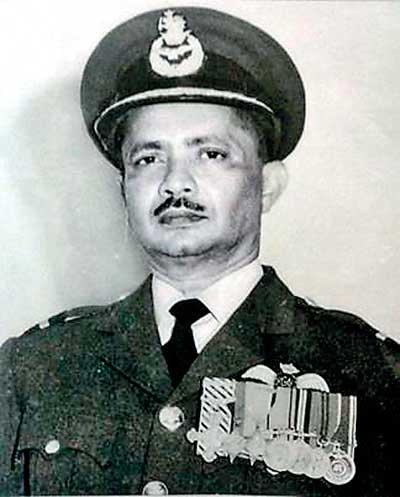 the Imperial Defense College UK from January to December 1961. In 1970, this college was renamed as the Royal College of Defence Studies to, “To prepare senior officers and officials of the United Kingdom and other countries, and future leaders from the private and public sectors, for high responsibilities in their respective organizations, by developing their analytical powers, knowledge of Defence and international security, and strategic vision”.
the Imperial Defense College UK from January to December 1961. In 1970, this college was renamed as the Royal College of Defence Studies to, “To prepare senior officers and officials of the United Kingdom and other countries, and future leaders from the private and public sectors, for high responsibilities in their respective organizations, by developing their analytical powers, knowledge of Defence and international security, and strategic vision”.
On completion of Imperial Defense College (IDC), he had served as Senior Air Staff Officer, Air Headquarters from April 1962 to November 1962. During this time he played a major role during the 1966 Ceylonese coup d’état attempt. In addition, AVM Amerasekera was instrumental in drafting regulations as applicable to then Ceylon taking reference from the “Queens Regulation”. Also gradually Ceylonising the RCyAF.
On 13 November 1962, he was promoted as a Temporary Air Commodore and was appointed the third Commander of the Royal Ceylon Air Force. He remains to be the first Ceylonese to hold this prestigious appointment. He was confirmed in the rank of Air Commodore on 1 January 1964 and promoted to Air Vice-Marshal on 1 October 1967. He retired from the RCyAF on 31 December 1970 after a successful tenure.
According to Late Sqn. Ldr. J.T.R. Fernando (Retd), “He had systematically reorganized the Air Force to meet the exacting demands of a developing country. He is known to be a stickler for a high code of ethics for his officers. Also, a man of principles, he never hesitated to speak up for what he believed in. He always stood steadfast in his principles. AVM Amerasekera was a great man, who resolutely believed in the immortal assertion by Henry Ward Beecher, “Greatness lies not in being strong, but in the right use of strength”. His strength was his uncompromising strict code of professional rectitude”.
Further, the Government had to rely heavily on the Air Force during two abortive coup d’état. AVM Amerasekera played a significant role in quelling successive attempts to overthrow the government. Further Late Sqn. Ldr. J.T.R. Fernando adds, “He (AVM Amerasekera) and Air Commodore Fred Papple who was his pilot and later his squadron Commander flew many missions together. Papple dedicated the recent book he has published, “An Anecdotal History of the 640 Squadron”, to those who served the squadron and devoted one chapter to “Amare”.
"AVM Rohan Amerasekera passed away on 20 March 1974 at the young age of 57. The late AVM Amerasekera was accorded a military funeral with full honours and a flypast which I witness and has a photographic memory"
Decorations
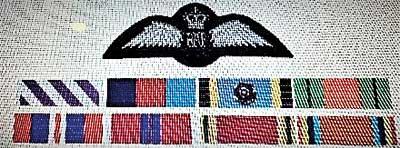
AVM Amerasekera received a DFC and Bar for his gallant service with the RAF during World War II as well as the 1939-1945 Star, the Air Crew Europe Star with the France and Germany Bar, the Defence Medal and the War Medal. After joining the RCyAF, AVM Amerasekera received the Ceylon Armed Services Long Service Medal, the Queen Elizabeth II Coronation Medal and the Ceylon Armed Services Inauguration Medal. His ceremonial sword and miniatures of his medals are preserved and on display at the Sri Lanka Air Force Museum.
Distinguished Flying Cross
 The award was established on 3 June 1918, shortly after the formation of the Royal Air Force (RAF), with the Royal Warrant published on 5 December 1919. It was originally awarded to RAF commissioned and warrant officers, including officers in Commonwealth and allied forces. The citation for P/O. Amerasekera for the DFC reads;
The award was established on 3 June 1918, shortly after the formation of the Royal Air Force (RAF), with the Royal Warrant published on 5 December 1919. It was originally awarded to RAF commissioned and warrant officers, including officers in Commonwealth and allied forces. The citation for P/O. Amerasekera for the DFC reads;
“This officer has displayed a high degree of courage and determination in navigating his aircraft to the target and back, often under great difficulties. In November 1943 whilst on a flight to a distant target, the oxygen supply failed early in the sortie. P/O. Amerasekera, though suffering from lack of oxygen and extreme cold continued his duties and the mission was successfully completed. This officer has proved himself to be a navigator of outstanding ability.”
Bar to Distinguished Flying Cross
The citation for the bar to DFC for Flying Officer Amerasekera reads: “This officer has completed the second tour of the operational duty. In December 1944 on route to Essen, his aircraft was engaged by searchlights and heavy anti-aircraft fire causing severe damage to the aircraft. Despite shell splinters entering his compartment Flying Officer Amerasekera took evasive action and completed his allotted task. His other targets have been Ruhr Valley, Chemnitz and Hanover. On all occasions FO Amerasekera had a set a fine example by his tenacity and
devotion to duty”.
"Then Flight Lieutenant Amerasekera returned to Ceylon in early 1946 and served at RAF Kandy, as an interpreter until August 1946. He was released from RAF in July 1946. He resigned his commission on 4 November 1946 with explicit permission to retain the rank of Flight Lieutenant. Then Flight Lieutenant Amerasekera joined the Department of Civil Aviation on 20 August 1946 as the Assistant Aerodrome Officer (Flying Control) at the Ratmalana Airport, while on leave from the RAF. On 1 October 1950, he was promoted as the Acting Airport Controller"
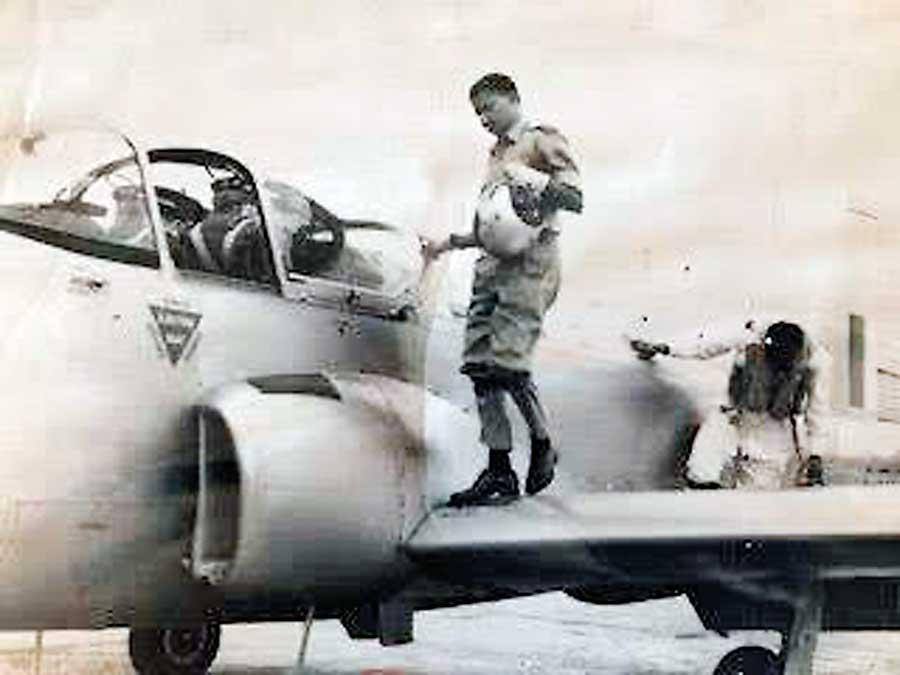
Seeking a Spiritual Path
Around 1965 in contrast, AVM Amerasekera took to a more spiritual path seeking the truth of life delving into books, thinking and meditating. Reflecting on his full spectrum in real life may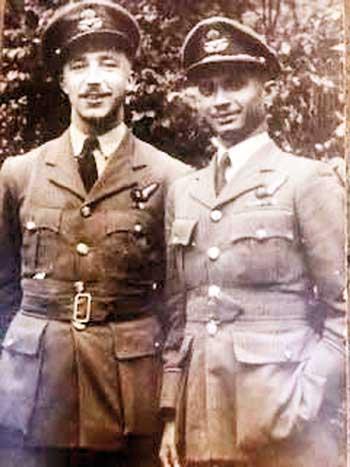 have prompted him to choose this path. He ventured into the understanding of Karma and the true significance and purpose of life. In this search, he was successful in publishing six books titled “My understanding of Karma”, “The power beyond”, “Buddhism in Peril”, “The barrier of unhappiness”, “Unity of diversity”, and “The power within”.
have prompted him to choose this path. He ventured into the understanding of Karma and the true significance and purpose of life. In this search, he was successful in publishing six books titled “My understanding of Karma”, “The power beyond”, “Buddhism in Peril”, “The barrier of unhappiness”, “Unity of diversity”, and “The power within”.
It is imperative to note that these publications had been done while AVM Amerasekera was in office as the Commander of the Air Force, which is uncommon.
AVM Rohan Amerasekera passed away on 20 March 1974 at the young age of 57. The late AVM Amerasekera was accorded a military funeral with full honours and a flypast which I witness and has a photographic memory. His widow Aloma (née Dender) whom he married on 12 November 1958, was blessed with a son and a daughter who survives AVM Rohan Amerasekera. Mrs Amerasekara is domicile in Sunshine Coast in Queensland, with her daughter Rosharni and son Ajith is in Berkley California.
Though I did not have the opportunity to meet AVM Amerasekera in person, AVM and Mrs Amerasekera were friends of my parents since 1957 being contemporaries in the RCyAF. Further, I consider it an honour and a privilege for being able to compile this article and pay tribute to this veteran.
Finally, I wish to acknowledge the assistance for the information and picture courtesy goes to Mrs Aloma Amerasekera, son Ajith, daughter Rosharni and Sqn Ldr Noel Lokuge. In addition to Mr Charles M. Amerasekera, Wg Cdr EH Ohlmus (Retd), the Late Sqn. Ldr. J.T.R. Fernando (Retd), for the extracts of their interviews/open-source articles, published on AVM ER Amerasekera and also to the Sri Lanka Air Force.
We salute this legendry, ace, Air warrior, officer and a Gentleman, for what the nation and the Sri Lanka Air Force has achieved today, May he Rest in Eternal Peace!
The author, Air Chief Marshal Gagan Bulathsinghala RWP, RSP, VSV, USP, MPhil, MSc, FIM NDC, psc. is Former Commander to the Sri Lanka Air Force and former Ambassador to Afghanistan
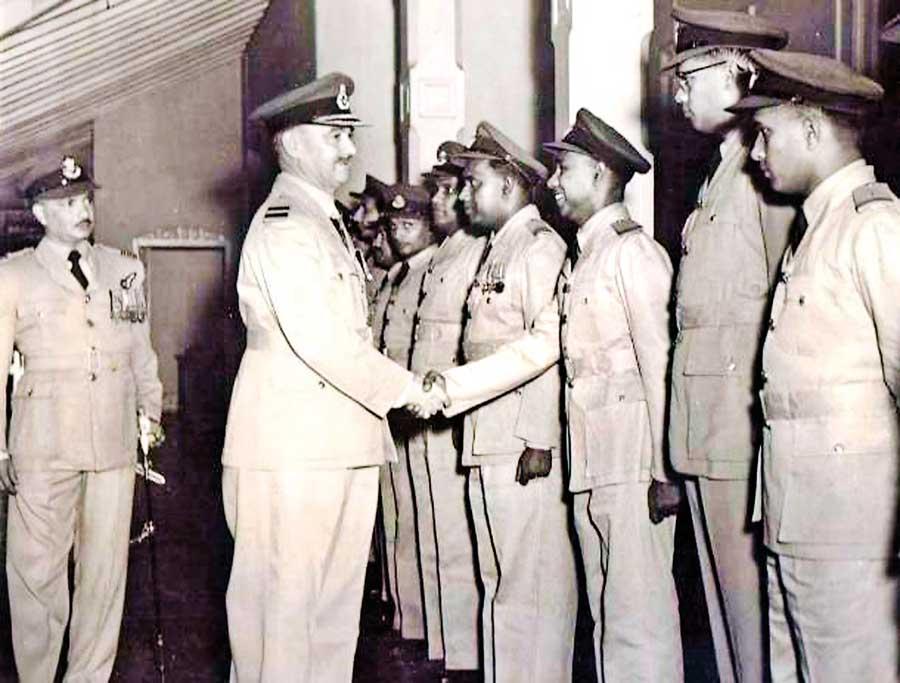
Left Wg Cdr Ameresekere, Air Commodore Graham Bladon shaking hands with my father at AFHQ

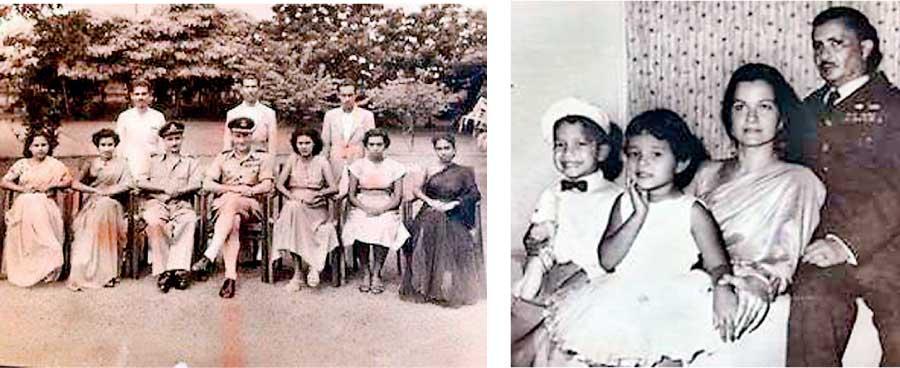
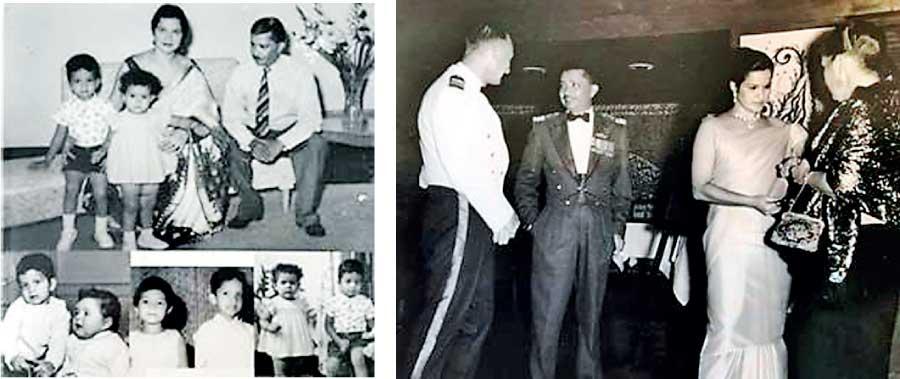
28 Nov 2024 5 minute ago
28 Nov 2024 13 minute ago
28 Nov 2024 1 hours ago
28 Nov 2024 3 hours ago
28 Nov 2024 4 hours ago